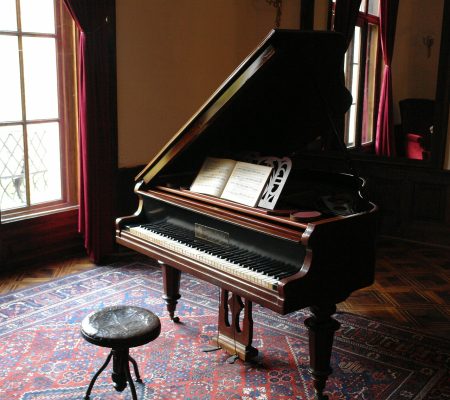Estimated reading time 5 minutes
Table of Contents
Introduction
Do you have a problem with mis-accented syllables in your lyrics? Learning about prosody will help you deal with the issue. Read more to understand prosody in your songwriting.
- What exactly is prosody and why is it important in songwriting? In The Craft of Lyric Writing, Sheila Davis states that good prosody means, “…that all words are sung as we speak them” (248).
- Conversely, The New Harvard Dictionary of Music defines prosody as, “…features of a language involving stress, pitch, and length of syllables” (Randel, 661).
- Language has stress, pitch, and length, and music also has stress, pitch, and length. Therefore, prosody could also be defined as the successful marriage of music and words. Prosody has three aspects, but not all of these aspects impact your lyrics.
This article uses musical and lyrical terms. For definitions, see the Glossary at the end of the post.

The Elements of Prosody in Songwriting: Stress in Lyrics and Music
- By far the most important element of prosody to the English-speaking songwriter has to do with the emphasis, or stress, in the words. Stress, or making one sound louder than another, has a huge impact on the prosody in your songwriting.
- You give different emphasis to words within phrases and sentences when speaking. Therefore, when you get a pattern of stressed and unstressed words, you get rhythm. Likewise, you give different emphasis to the syllables in multi-syllabic words.
- For example, the word “piano” has the emphasis placed on the second syllable: pi-AN-o. Similarly, musical meter also has a hierarchy of stress.
- In 4/4 time, the first beat has the strongest stress, meaning it gets played louder than the other beats within the measure. Next, the third beat has the second strongest stress, while the fourth beat (which anticipates the first beat) has the third strongest stress. Finally, the second beat gets the least amount of stress.
- Also, when playing eighth notes, beats get stressed more than off-beats. Good prosody can’t be achieved if you don’t line up the musical accents with the lyrical stress.
- If you carelessly place “piano” in the music, you could just as easily end up with PI-an-o, or pi-an-O, as pi-AN-o.
- When dealing with words of two or more syllables, it’s a smart idea to check a good dictionary, such as Merriam-Webster. It will show you how the words get stressed. Comparing the dictionary entries with how the words in the song get sung can help you spot and fix prosody issues.

Why Does Prosody in Songwriting Matter?
Why does lining up the stress of the text and the music matter for prosody in songwriting? Two reasons:
- A word or sentence that has the stresses badly placed will sound odd or strained.
- A multi-syllable word that gets mis-accented will be harder to understand.
Summer in the City, performed by The Lovin’ Spoonful, gives you an example of the impact of mis-accented syllables. Generally, the lyrics are excellent.
However, the line, “despite the heat it will be all right” has an issue. The word “despite” has the accent on the first syllable, rather than the second where it belongs.
Misplacing the accent on this word makes it sound funny. Also, it makes it harder to understand when hearing the song without a lyric sheet.
However, it would break up the chorus’ rhythmic motif to shift the word backward in time half a beat. Also, it would place “de-” on an off-beat and “-spite” on a beat. This probably explains why “despite” has a misplaced accent.
Summer in The City Video
Balancing the Needs of the Lyrics and Music for Better Prosody in Songwriting
This brings up the problem where the needs of your music and your lyrics may not always be in sync with each other.
Often the needs of your music will have to be balanced against the needs of your lyrics, such as:
Music
Lyrics
- complete thoughts
- flow
- natural and un-inverted phrases
- syllable stress
- vowel and consonant sounds
- sing-ability
Many lyric writing books talk about structuring a lyric’s rhythm around standard poetry metrical units, such as: iambs, trochees, dactyls, spondees, and anapests. While these can be useful for the non-musical lyric writer, be aware that musical rhythm has a lot of flexibility.
Shifting notes forward/backward in time, accent marks, eighth notes, triplets, and off-beat syncopation can all be used for correcting textual/musical accent problems. Two different musicians can write music for the same lyric and pull out vastly different rhythms for their melodies.
As you can see, many factors need to be balanced to maintain effective prosody in your songwriting.

Conclusion
How much you pay attention to prosody in your songwriting affects how natural your songs will sound. Prosody is the marriage of music and lyrics, and good prosody happens when the stress and mood of the lyrics matches the music.
Popular music generally aims for conversational sounding lyrics, and prosody is an important part of achieving that goal.
© 2021 Geoffrey Keith
Join me for in-person or online lessons today!
Glossary
Singing Rhythm Syllables in 9-8 Time
Do you have trouble performing compound meters, such as the 9-8 time signature? The post’s soundtrack will help you get the sound of 9-8 in your ear as you practice along with it. Read more to learn about singing rhythm syllables in 9-8 time. Estimated reading time 4 minutes.
Read MoreIs Singing Solfege Helpful for Learning to Hear Intervals by Ear?
Is singing solfege actually helpful for learning to hear intervals by ear? Sort of. In some contexts, solfege can be useful for hearing how the intervals sound so you can sing in tune. In others, solfege won’t help at all. Click to answer the question, “Is singing solfege helpful for learning to hear intervals by ear?” Estimated reading time 4 minutes.
Read MoreColor Coding Musical Accents Using the Shape Note Advantage for Accurate Special Needs and LD Performance
We approach accents differently than other types of articulations. It is not just about using color to make the accents pop off the page. Using shapes creates a guide for when to play louder. Consequently, for accents we take our example from shape notes. Estimated reading time 3 minutes.
Read MoreSinging Rhythm Syllables in 2-4 Time
Do you have a hard time sight singing rhythm in time signatures other than 4-4? 2-4 gets used a lot in marches, so you often find it used in patriotic songs, making it worth learning. Read more to learn about singing rhythm syllables in 2-4 time. Estimated reading time 4 minutes.
Read More

![Singing Rhythm Syllables in 2-4 Time - Female Singer - Singing Rhythm Syllables in 9-8 Time - Perfect Pitch: Discover the Truth [Plus Absolute Pitch Test]](https://successmusicstudio.com/wp-content/uploads/2022/02/Singing-Rhythm-Syllables-in-2-4-Time-Female-Singer-270x300.png)
![Is Singing Solfege Helpful for Learning to Hear Intervals by Ear - Children Singing - Sing Silent Night with Shape Note Solfege - Deck the Halls (Lyrics and Song) - Angels We Have Heard on High: A Powerful Carol of Joy [Words]](https://successmusicstudio.com/wp-content/uploads/2023/03/Is-Singing-Solfege-Helpful-for-Learning-to-Hear-Intervals-by-Ear-Children-Singing-300x225.png)

